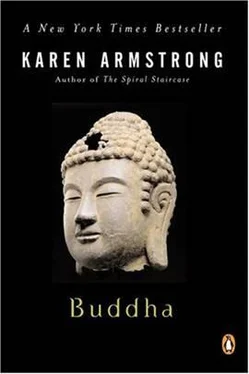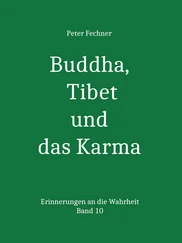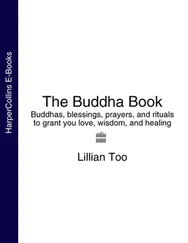Once Gotama had mastered these physical disciplines, he was ready for the mental exercise of ekagrata: concentration “on a single point.” In this, the yogin refused to think. Aspirants learned to focus on an object or an idea, to exclude any other emotion or association, and refused to entertain a single one of the distractions that rushed into their minds.
Gotama was gradually separating himself from normality and trying to approximate the autonomy of the eternal Self. He learned pratyahara (withdrawal of the senses), the ability to contemplate an object with the intellect alone, while his senses remained quiescent. In dharana (concentration) he was taught to visualize the Self in the ground of his being, like a lotus rising from the pond or an inner light. During his meditation, by suspending his breathing, the aspirant hoped that he would become conscious of his own consciousness and penetrate to the heart of his intellect, where, it was thought, he would be able to see a reflection of the eternal Spirit ( purusa ) . Each dharana was supposed to last for twelve pranayamas; and after twelve dharanas the yogin had sunk so deeply into himself that he spontaneously attained a state of “trance” ( dhyana; in Pali, jhana ) .
All this, the texts insist, is quite different from the reflections that we make in everyday life. Nor is it like a drug-induced state. Once a skilled yogin had mastered these disciplines, he usually found that he had achieved a new invulnerability, at least for the duration of his meditation. He no longer noticed the weather; the restless stream of his consciousness had been brought under control, and, like the Self, he had become impervious to the tensions and changes of his environment. He found that he became absorbed in the object or mental image he was contemplating in this way. Because he had suppressed his memory and the flood of undisciplined personal associations that an object usually evoked, he was no longer distracted from it to his own concerns, he did not subjectivize it, but could see it “as it really was,” an important phrase for yogins. The “I” was beginning to disappear from his thinking, and the object was no longer seen through the filter of his own experience. As a result, even the most humdrum of objects revealed wholly new qualities. Some aspirants might have imagined that at this point they were beginning to glimpse the purusa through the distorting film of praktri.
When, using these techniques, the yogin meditated on the doctrines of his dhamma, he experienced them so vividly that a rational formulation of these truths paled in comparison. This was what Alara Kalama had meant by “direct” knowledge, since the delusions and egotism of normal consciousness no longer came between the yogin and his dhamma; he “saw” it with new clarity, without the distorting film of subjective associations. These experiences are not delusions. The psychophysical changes wrought by pranayama and the disciplines that taught the yogin to manipulate his mental processes and even to monitor his unconscious impulses did bring about a change of consciousness. The skilled yogin could now perform mental feats that were impossible for a layman; he had revealed the way the mind could work when trained in a certain manner. New capacities had come to light as a result of his expertise, just as a dancer or an athlete displays the full abilities of the human body. Modern researchers have noted that during meditation, a yogin’s heart rate slows down, his brain rhythms go into a different mode, he becomes detached neurologically from his surroundings and acutely sensitive to the object of his contemplation.
Once he had entered his trance ( jhana ) , the yogin progressed through a series of increasingly deep mental states, which bear little relation to ordinary experience. In the first stage of jhana, he would become entirely oblivious to the immediate environment, and feel a sensation of great joy and delight, which, a yogin could only assume, was the beginning of his final liberation. He still had occasional ideas, and isolated thoughts would flicker across his mind, but he found that for the duration of this trance he was beyond the reach of desire, pleasure or pain, and could gaze in rapt concentration on the object, symbol or doctrine that he was contemplating. In the second and third jhanas, the yogin had become so absorbed in these truths that he had entirely stopped thinking and was no longer even conscious of the pure happiness he had enjoyed a short while before. In the fourth and final jhana, he had become so fused with the symbols of his dhamma that he felt he had become one with them, and was conscious of nothing else. There was nothing supernatural about these states. The yogin knew that he had created them for himself, but, not surprisingly, he did imagine that he was indeed leaving the world behind and drawing near to his goal. If he was really skilled, he could go beyond the jhanas, and enter a series of four ayatanas (meditative states) that were so intense that the early yogins felt that they had entered the realms inhabited by the gods. The yogin experienced progressively four mental states that seemed to introduce him to new modes of being: a sense of infinity; a pure consciousness that is aware only of itself; and a perception of absence, which is, paradoxically, a plenitude. Only very gifted yogins reached this third ayatana, which was called “Nothingness” because it bore no relation to any form of existence in profane experience. It was not another being. There were no words or concepts adequate to describe it. It was, therefore, more accurate to call it “Nothing” than “Something.” Some have described it as similar to walking into a room and finding nothing there: there was a sense of emptiness, space and freedom.
Monotheists have made similar remarks about their experience of God. Jewish, Christian and Muslim theologians have all, in different ways, called the most elevated emanations of the divine in human consciousness “Nothing.” They have also said that it was better to say that God did not exist, because God was not simply another phenomenon. When confronted with transcendence or holiness, language stumbles under impossible difficulties, and this kind of negative terminology is one way that mystics instinctively adopt to emphasize its “otherness.” Understandably, those yogins who had reached these ayatanas imagined that they had finally experienced the illimitable Self that resided in the core of their being. Alara Kalama was one of the few yogins of his day to have attained the plane of “Nothingness”; he claimed that he had “entered into” the Self which was the goal of his quest. Gotama was an incredibly gifted student. Yoga usually required a long apprenticeship that could last a lifetime, but in quite a short time, Gotama was able to tell his master that he had reached the plane of “Nothingness” too. Alara Kalama was delighted. He invited Gotama to become his partner in the leadership of the sangha, but Gotama refused. He also decided to leave Alara Kalama’s sect.
Gotama had no problem with the yogic method and would use it for the rest of his life. But he could not accept his master’s interpretation of his meditative experience. Here he showed the skepticism about metaphysical doctrines that would characterize his entire religious career. How could the state of “Nothingness” be the unconditioned and uncreated Self, when he knew perfectly well that he had manufactured this experience for himself? This “Nothingness” could not be absolute, because he had brought it about by means of his own yogic expertise. Gotama was ruthlessly honest and would not allow himself to be gulled by an interpretation that was not warranted by the facts. The elevated state of consciousness that he had achieved could not be Nibbana, because when he came out of his trance, he was still subject to passion, desire and craving. He had remained his unregenerate, greedy self. He had not been permanently transformed by the experience and had attained no lasting peace. Nibbana could not be temporary! That would be a contradiction in terms, since Nibbana was eternal. The transitory nature of our ordinary lives was one of the chief signs of dukkha and a constant source of pain.
Читать дальше












